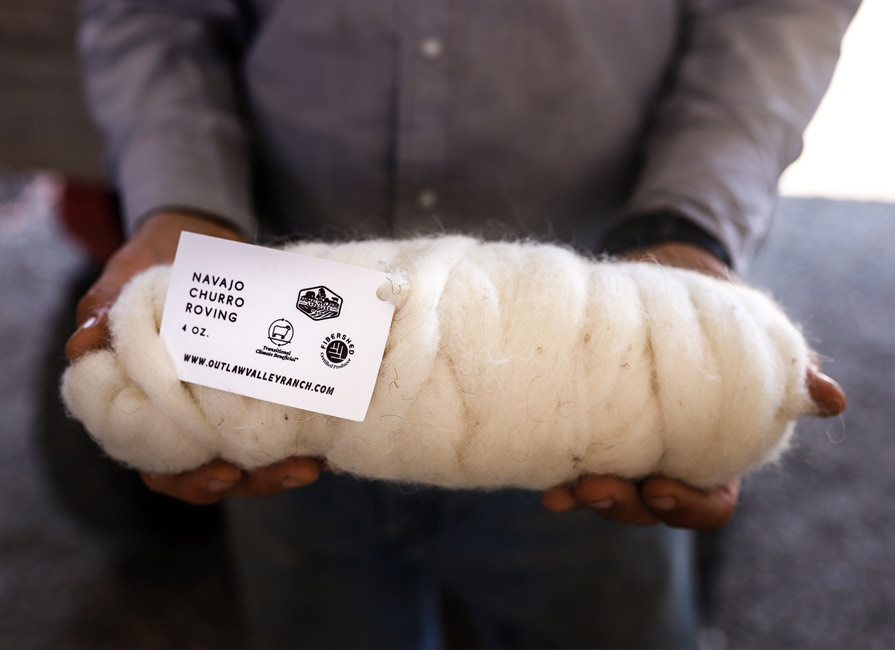Market research shows that today’s consumers are increasingly interested in knowing where their food comes…

Tell Your Story
A good product label is essential for any successful marketing strategy. Yet many farmers who sell directly to the public make the mistake of assuming a unique, stylized label is somehow irrelevant—or that it’s all too expensive, time consuming and bureaucratic.
Yet every farmer who sells directly to the public is still very much part of a bigger and ever-changing labeling landscape. Remember: shoppers who visit farmers’ markets or farm stores will inevitably also visit the bigger grocery stores or see mainstream advertising. As public interest in sustainable products grows, other food businesses—both large and small—will seek to launch ‘sustainable’ products to capitalize on this new and rapidly expanding market.
Don’t rest on your laurels: make sure your packaging is doing the best job it can to attract, inform and retain potential customers. AGW is here to help you achieve these goals.
Learn the rules
In order to market effectively it is important to understand the labeling process. For starters, designing a new label for your products will likely involve multiple parties: your processor, designer, printer, and the appropriate state or federal/government agency that oversees food labeling.
Before you start, it is essential to understand and familiarize yourself with what claims you can—and cannot—make about your products.
For instance, USDA will not approve the use of “hormone free” on any label because all animals have hormones. You can, however, say your animals are raised with “no hormones administered,” although pork or poultry products require an additional statement explaining that it is illegal to administer hormones to these species.
By law, all meat sold to the public must be labeled with the following information:
- The contents of the package (name of the product, such as “lamb chops,” “ground beef” or “pork sausage”).
- Other ingredients, if any, such as spices in sausage. These must be listed in descending quantity order—for example, “ground pork, salt, red pepper, sage and black pepper.”
- Safe handling instructions, including, if appropriate, “Keep refrigerated or frozen.”
- Inspection mark with processing plant number.
- The net weight of the package.
- The name and address of the processing plant or, if the name and address are other than the processing plant (such as the name and address of a farm), it must be qualified by a statement identifying the person or firm associated with the product (e.g., “Packed for ______” or “Distributed by ______”).
Farmers and ranchers in Canada will find labeling requirements at inspection.gc.ca
Don’t sell yourself short
If you raise hens outdoors on pasture in small flocks and you feed a custom-blended feed with no animal byproducts, please don’t just label your carton “cage free eggs”!
While this claim may evoke images of hens running around outside, most “cage free” eggs come from de-beaked hens raised indoors in industrial units—the complete opposite of your pasture-based system. Remember, too, that your potential customers probably see cartons of “cage free” eggs at their nearest grocer at a much lower price. So, from their perspective, why should they pay more for your “cage free” eggs?
Similarly, when it comes to meat, the widely used “natural” claim only means the product was minimally processed and contains no artificial ingredients. Legally, it explains absolutely nothing about how animals are raised. So, feedlot beef can just as easily be labeled “natural” as high welfare, grassfed beef.
If your farming practices are well above the baseline claims, please make sure you get credit. Make the most of the label claims and terms that truly define your farming system. Highlighting that your products are certified by a credible third-party certification like AGW is a great place to start.
Market yourself
As well as your high-welfare, sustainable AGW certification, what else makes your farm special? Start by looking at other labels in your sector and think about what could set yours apart.
Do you raise a particular breed known for its flavor attributes? Do you feed grain grown on your own farm? Has your farm been in the family for multiple generations? Have you earned any awards, certifications or distinctions? These could all spark interest in potential customers.
Remember: some claims need evidence before they can be used. For instance, the USDA will want to see documentation supporting any breed claim. Similarly, you will need to provide proof of current AGW certification before you can use the logos.
Get in touch
A professional food label is an important investment in your business, helping you to stand out from the crowd. With our help, producing a professionally designed and legally approved food label needn’t be costly or time-consuming. So, what are you waiting for?!
Katie Amos is Lead Farmer and Market Outreach Coordinator with A Greener World



